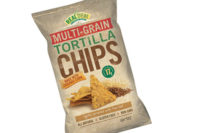Studies indicate that shoppers pay more attention to what they eat, which is driving development and reformulation of products with cleaner labels. But, do clean labels really mean clean foods?
Recent studies find that shoppers are paying more attention to what they put in their bodies, therefore driving development and reformulation of products with cleaner labels. An article in the December 2011 issue ofFood Technology Magazine, published by the Institute of Food Technologists (IFT), says that people tend to perceive foods with simpler labels to be less processed. The article explains how industry is responding to consumer demand for clarity in regard to food labels.
The concept of a “clean” food label can be interpreted in many different ways. Most often, formulating clean-label foods refers to eliminating chemical-sounding or artificial ingredients that indicate extra-processing. Simplicity is an interpretation of a clean label. This includes short, concise ingredient statements, such as a pint of ice cream that focuses on the simplicity and goodness of five ingredients-milk, cream, sugar, eggs and one flavoring ingredient. Transparency or informing shoppers of exactly what’s inside a product is another clean-label attribute. A low-fat yogurt container that discloses artificial sweeteners is one example. Regardless if consumers choose to make good choices or not, they want transparency regarding nutritional information on food packages, grocery store shelves, menus and the Internet.
Research shows that consumers prefer to avoid artificial or overly processed foods, though deciding what is highly processed varies with the individual. This can be a real challenge when it comes to formulating a clean label. Processed foods can be defined as foods that have been altered from their “direct from Mother Nature” state of being.
Source: www.ift.org
Get our new eMagazine delivered to your inbox every month.
Stay in the know on the latest snack and bakery industry trends.
SUBSCRIBE TODAY!Copyright ©2024. All Rights Reserved BNP Media.
Design, CMS, Hosting & Web Development :: ePublishing



